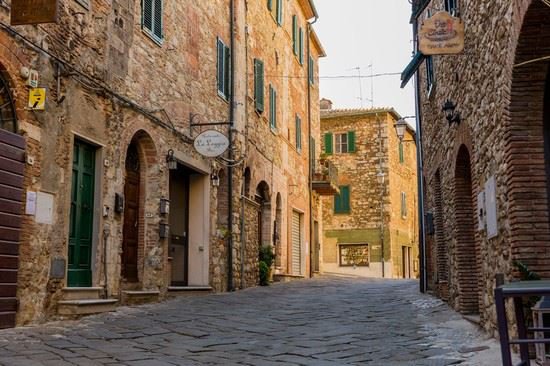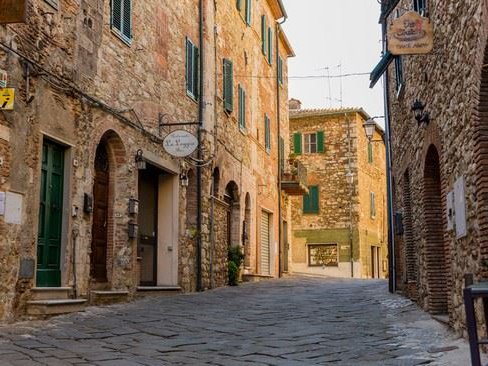



Suvereto
As for the other villages along the Etruscan Coast, the toponym is first attested around the year one thousand, more precisely in 973, and originates from Suber, hence Suvereto is the 'cork wood'. A definition that still holds true today. In fact, it is surrounded by a forest of chestnut, cork and other trees typical of the Mediterranean maquis.
Only ten minutes from the beaches and the sea of the Costa Etrusca, Suvereto is certainly one of the most charming villages in the Tuscan region. The road leading to this delightful village has been called 'The Wine Road'.
This enunciation derives from the various wineries and farms along the way, which offer excellent wines to be tasted in the company of exquisite food and wine specialities. The landscape, architectural heritage and hospitality of the municipality of Suvereto have been officially recognised by the TCI Orange Flag tourist-environmental quality mark. In addition, this locality is part of the association 'I borghi più belli d'Italia' (Italy's most beautiful villages), which includes the major historical centres that stand out for their 'outstanding historical and artistic interest'.
Even before entering its ancient walls, visitors can pause in front of the Pieve di San Giusto. A church built in a style similar to the Pieve di San Giovanni in Campiglia Marittima. Among the most singular and noteworthy aspects of the religious building are the two travertine columns, crowned by capitals on which rest two lions fighting anthropomorphic figures.
After taking a few souvenir photographs, or entering the interior of the parish church in search of a brief moment of silence and meditation, the route can continue by entering the historical walls of Suvereto.
Unlike most of the historical centres of the Costa Etrusca, which were dominated by the Della Gherardesca family, Suvereto was a territory in the hands of the Aldobrandeschi. The current walls and the two entrances, defined as the Porta di Sotto (the one near the Pieve di S. Giusto) and the Porta di Sopra (the one to the north), were instead built by Pisa.
Of the many religious buildings recorded in historical documents between the 11th and 13th centuries, the only one preserved is the Chiesa di San Francesco. Once you are in the vicinity of this ecclesiastical building, a visit to the enchanting cloister belonging to the adjoining convent is recommended.
The Rocca Aldobrandesca is another place that cannot be missed on our itinerary within the old walls of Suvereto. Located in the upper part of the town, it was built in the second half of the 12th century by the family of the same name as a symbol of power and prestige.
The municipality of Suvereto is not only history and culture. As soon as you leave the town, you can get involved in the greenery and nature and embark on one of the eighteen trekking trails specially designed to introduce you to the beauty of the surrounding landscape. Like the path that, starting from the hamlet of Prata (4 km from Suvereto) reaches the Romanesque church of Santissima Annunziata. A small building used in medieval times to welcome wayfarers and pilgrims passing through.



